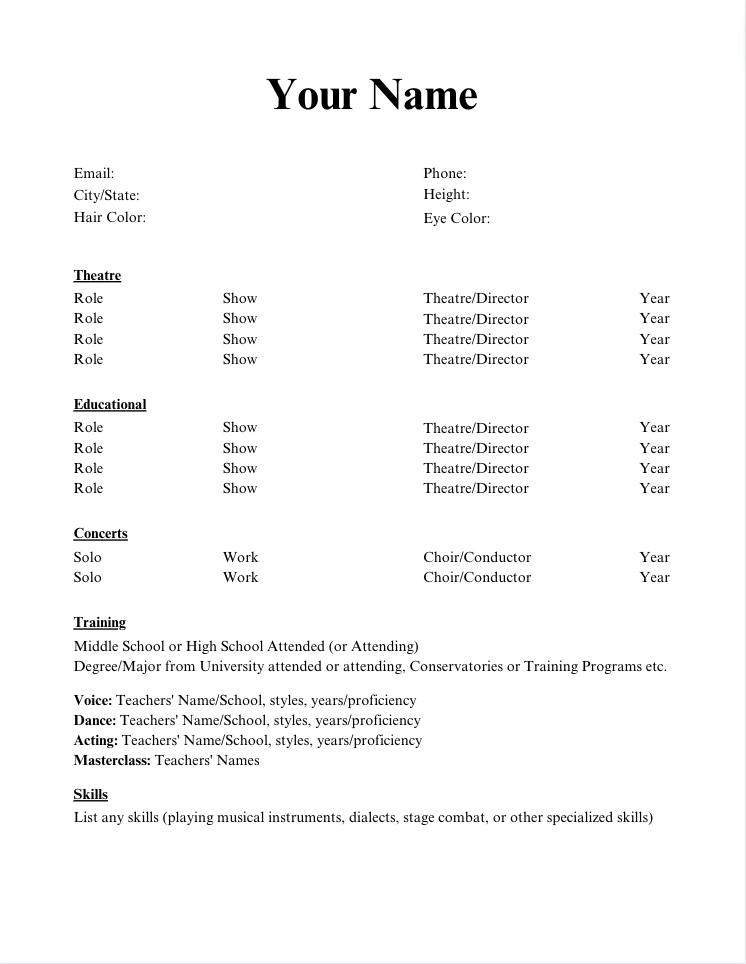Your First Resume: A Roadmap to Presenting Your Potential
Putting together your first theatre resume can feel daunting, but you can create a compelling resume that showcases your potential as a theatre artist. Here's a step-by-step guide to help you assemble your first theatre resume:
Format and Structure:
Keep it Simple: Opt for a clean and professional format. Use a standard font (e.g., Arial, Times New Roman) and stick to a font size between 10 and 12.
Single Page: Aim to keep your resume to a single page. As a beginner, you may not have an extensive list of credits, so focus on presenting the most relevant information.
Contact Information:
Begin your resume with your full name, phone number, email address, and city/state or city/country.
Headshot:
Attach a professional headshot to your resume. It should be an 8x10 inch photo in color or black and white. Choose a high-quality picture that captures your personality and reflects the roles you aspire to play.
Performance Experience:
Start with any relevant acting experience you have. Include the production's title, the role you played, the name of the theater company or school, and the production's date (year is enough).
If you don't have much performance experience, include any workshops, classes, or productions you participated in during your training.
Training and Education:
List your formal education, including any degrees, diplomas, or certifications related to theatre. Include the institution's name, the program of study, and the dates of your enrollment or graduation.
Mention any notable workshops, masterclasses, or intensive training programs you've attended. Include the name of the instructor or organization and the dates.
Skills:
Highlight your relevant theatre skills, such as playing musical instruments, dialects, stage combat, or other specialized skills.
Be honest about your proficiency level for each skill, ranging from basic to advanced.
Proofread and Review:
Before finalizing your theatre resume, proofread it thoroughly for spelling and grammatical errors. Ask a trusted friend, teacher, or mentor to review it and provide feedback.
Optional:
References:
At the bottom of your resume, you can include a line that says, "References available upon request." Have a separate document with the names, contact information, and professional affiliations of individuals who can vouch for your skills and character.
Objective or Personal Statement (Optional):
Write a brief objective or personal statement summarizing your career goals and highlighting your passion for theatre. This section is optional but can provide insight into your aspirations as a theatre artist.
Website:
If you have a professional website or online portfolio, include the URL as well.
Remember, as a beginner, focus on highlighting your enthusiasm, training, and relevant experience. Tailor your resume for each audition or opportunity by emphasizing the most relevant information. With time and experience, you can expand your theatre resume and add more credits. Break a leg as you embark on your exciting journey in the world of theatre!
